MY LOVE AFFAIR WITH CUBA
by Gary Lucas
The fair island of Cuba, formerly the Forbidden Zone to most Americans, is currently yielding perhaps its best kept secret to those who venture there; namely, that in terms of general excellence in the arts (and this includes music, theater, dance, painting and film), there is more sheer talent per square inch manifest among the 11 million inhabitants over the island's 42 thousand square miles than in just about any country you'd care to name.
A little back-story: As a world-traveling guitarist, songwriter and composer, I first started performing in Cuba back in 2009 on a recommendation from the British filmmaker and old Cuba hand Sebastian Doggart, whom I met at a music and film festival in South Korea. Sebastian was much impressed with my live solo guitar scoring to films—and he proposed a swap.
If I gave him free music for his next documentary (the second in a trilogy focusing on Condoleeza Rice entitled "American Faust: From Condi to Neo-Condi"), he would recommend me performing live with a film as a special event of the Havana Film Festival. The only hitch was, I would need a Latin-themed film to accompany, it being a Festival of Latin America Cinema.
I jumped at the chance. I'd always wanted to perform in Cuba.
And I recalled there existed a Spanish-language version of Todd Browning's 1931 shocker "Dracula"—filmed in Hollywood at night on the same sets as "Dracula" with an all-Latino cast speaking in Spanish—a standard practice in the early 30's to create a customized version specially for the emerging worldwide Latin market before the advent of dubbing technology.
To many critics, Spanish "Dracula" is considered superior to the original, with more fluid camera-work, peppier editing rhythms, and hotter, shall we say more red-blooded, performances. Like the original version, there is no music on the soundtrack. Filmed at the height of the Depression, there was just no budget for a composer and orchestra. It seemed the ideal film for my purposes.
My proposal was green-lighted by the Havana Film Festival, and in Dec. 2009 I arrived in the middle of Festival craziness centered at the historic landmark Hotel Nacional de Cuba, former enclave of Meyer Lansky and his gangster cronies, now Ground Zero for the Havana Film Festival.
The world premiere of my new project took place at the old La Rampa Cinema in downtown Havana, packed with a cross-section of Cuban film fans of all ages as well as many families out for an evening's fun. Spanish "Dracula" was already known there, having screened in Cuban cinemas semi-regularly since the 30's. The film kind of belongs to Cuba now. In fact, when the American Film Institute restored the film in the mid-90's, lost elements of the print were eventually located in the Cuban Film Archive.
It was a great evening. I received a standing ovation after my performance, and my score was favorably reviewed in the national Cuban newspaper Granma.
Thus began my love affair with Cuba—grown deeper with every visit.
I was overwhelmed by the positive response my music received in Cuba, and the warmth and hospitality I was shown before I played a note. People spontaneously invited me into their homes to share a meal, or point out some off-the-beaten path point of interest not in the guidebooks.
And I began to avidly seek out and interact with Cuban musicians—without a doubt some of the finest in the world. Their music academies are first-rate, and they yearly turn out jaw-dropping virtuosos at a very tender age.
Since 2009 I have traveled to Cuba many times to perform world premieres of new live solo scores at the Havana Film Festival, including a score for Luis Bunuel's "The Exterminating Angel"; and also solo appearances at the Havana Jazz Festival, the Pabellon de Cuba (see photo right), and at the Gaia Arts Center, where I also have contributed music to several avant-garde theatrical productions. Also to recharge my creative batteries (you could spend days alone in the National Museum of Fine Arts of Havana gazing at the magnificent paintings of Wifredo Lam and other Cuban modern masters), and to soak up some of the tremendous artistic energy that flourishes (against all odds, considering the official US embargo of Cuba—still in place 56 years later) and radiates outward from this tiny island in a burst of impressive talent.
Let me focus on two strong and independent female artists with whom it has been a real pleasure and joy for me to collaborate with in Cuba.
I recently returned from my seventh trip to Havana where I performed a solo concert at the Gaia Arts Center, an avant-garde theater and artist's space run by the indefatigable, unsinkable Cuban actress/director/producer/force of nature, Esther Cardoso.
Esther is that rare passionate artist who is also a shrewd and feisty administrator, whose can-do spirit has single-handedly done more to further the advancement of modern Cuban theater than just about anyone you might care to name—and she has done it all without the benefit of government support.
A ravishing beauty in her youth (a taxi driver who gave my wife and I a tour on our last visit coincidentally revealed he'd once proposed to her: "She was the most beautiful woman in Cuba"), Esther was originally married to one of Fidel's generals, who eventually became disenchanted with the Revolution and who retired from active service peacefully in the countryside.
Because of this blood connection, Esther is nowadays considered one of the artistic "untouchables" in Cuba—and the government has pretty well left her alone to do her thing for many years at Gaia.
Gaia Arts was co-founded in 2000 by Esther and my pal Sebastian Doggart, who directed many plays there after the pair bought and refurbished an old building together in Old Havana, with Esther installed as artistic director.
Since then she has mounted numerous world-class productions and musical events that have received little notice in the state-run media. (To paraphrase Sophocles, those artists whom the gods wish to destroy are ignored to death by the media. Esther on the other hand has gone from strength to strength).
Despite a semi-official media blackout on Gaia's, Esther routinely co-writes, produces, directs, and occasionally stars in sophisticated drama featuring the cream of young Cuban actors in her gorgeous theater space on the top floor of one of the oldest standing buildings in Havana—a stone's throw from historic Plaza Vieja.
Her theater background is impressive. Esther holds a doctorate in Stage Arts from the Instituto Superior de Arte where she taught and gave workshops for many years, and she toured the world in the 60's as an actress performing classical roles with Cuba's National Theater.
An outspoken, compassionate and charismatic earth-mother (hence her theater is named Gaia, after the Greek primordial Earth deity), Esther is fiercely proud of her Cuban heritage and her country's artistic legacy—and for years she has fought against foreign real estate speculators who have offered her big money to sell her theater space and turn it into "high-class brothel apartments" for wealthy foreigners (her own words).
I've had an amazing experience working closely with Esther composing and performing live music for two of her recent productions:
a version of the great Spanish writer Federico Garcia Lorca's domestic drama "La Casa de Bernarda Alba", re-cast in a Cuban setting and featuring Esther in the starring role;
and an avant-garde theatrical event based on the life and work of Italian film director Michelangelo Antonioni, entitled "Dios No Fue Antonioni" (God was not Antonioni), which featured immersive theatrical tableaux based on scenes from Antonioni's well-known films. Esther's theater was packed both nights I performed in her show, and much of it was filmed and broadcast on ORF Austrian national television.
For the Antonioni event, the audience was forced to congregate on the street in front of her theater until an open-air jeep filled with howling black-clad mimes in whiteface straight out of the film "Blow-Up" hurtled round the corner to signal the start of the play. The curious spectators were then ushered up a steep staircase to enter the theater proper and take their seats in rows of folding chairs. The lights dimmed and the play unfolded, framed by a recurring interview with an actor playing the elderly Antonioni in a wheel chair recalling his past triumphs.
During the play the audience was encouraged to move about the theater and peer into and in some cases enter large adjoining rooms off the main space, where they could observe iconic scenes from Antonioni's films re-enacted and transformed through the prism of Esther's artistic vision—including the mass lovemaking in the desert sequence from "Zabriskie Point", pantomimed by some of the most supple and beautiful dancers of both sexes I've ever witnessed—eventually moving onto the open-air patio circumadjacent to the theater where the play's denouement took place under the starry skies of Old Havana.
On opening night Antonioni's widow, in town for the Havana Film Festival, graciously lent her presence to Esther's event and gave the production her blessing.
Given the lamentable lack of financial and technical resources afforded her (her shows are normally free of charge to the public), Esther Cardoso continues to present mesmerizing multi-media productions in Spanish that are always on the cutting-edge conceptually and are usually given a local Cuban twist via sly emendations to the play's text—providing her audience, who recognize and chuckle at these topical allusions, an oblique commentary on the ongoing political situation today in Cuba.
Esther helps supports her theater through income generated by her guest-house Casa Esther, also located in the heart of Old Havana, a congenial three-story haven for travelers from all over the world, which this writer recommends to any visitors seeking a comfortable, inexpensive and friendly place to stay.
Esther's influence is writ large in Havana, although on the face of it she is still way under the radar there.
Case in point: on the last night of my latest Havana trip, Esther and my wife and I took a taxi to the upscale Vedado neighborhood on the outskirts of Havana, where sits a newer and rather more trendy artist's space, the Fabrica de Arte Cubano—a multi-tiered old factory replete with giant smokestack, now retro-fitted and refurbished as a hipster hang-out boasting several galleries, performance spaces, multiple bars and restaurants, and the ubiquitous dance-floor with DJ's.
It is one of the most popular nighttime destinations for young and relatively affluent Cubans...and on a Sunday night at 11pm there was a line on the sidewalk to get into the space snaking well around the block, reminding me a bit of Studio 54 in its hey-day. It looked like it would take an hour at least for us to gain admittance.
Viewing this mob scene, Esther strolled imperiously across the street towards the entrance, cutting right to the front of the line—and after speaking a few words to the doorman checking ID's, we were ushered inside.
"They know me", she said to us by way of explanation once we were in. "I am well-known in Havana as an underground theater legend. And they have taken and adapted many of my ideas here, ideas I first developed and presented at Gaia."
The Fabrica de Arte Cubano is extremely impressive—they have government support as well as the Ludwig Foundation behind them.
But the artistic seeds were sown originally by Esther Cardoso and Gaia.
Esther to me represents the heart and soul of Cuba—a proud artist who will not bend to anyone and who absolutely loves her country and its manifold artistic achievements. She is stubbornly opposed to seeing her country turned back into a puppet colony of the US in the current hotly anticipated gold-rush for investment dollars.
It is my dream to one day compose and perform music live for a Gaia production based on Molly Bloom's infamous soliloquy which closes James Joyce's "Ulysses", here titled "Molly Bloom in La Habana"—to be performed in Spanish with Esther taking the lead role, propped up on a pillow in a capacious bed. Esther Cardoso could really play that role, she is a gifted and ageless actress able to channel all the quicksilver moods that dart through Molly's consciousness during her nocturnal reveries.
The second formidable Cuban artist I would like to praise here, someone who has touched me deeply since meeting and working with her in Havana and later in NYC is the sweet and sultry vocalist Haydee Milanes, the youngest of legendary Cuban singer/songwriter Pablo Milanes' three daughters, and a superb artist in her own right (imagine a Cuban Norah Jones and you wouldn't be far off the mark).
To backtrack a bit:
One of the first characters I encountered in Havana was British ex-pat Toby Brocklehurst, a large, friendly, very pukka "Our Man in Havana" type of Englishman who's lived on and off there for over 20 years.
Toby runs a travel and production company called In Cloud Nine, specializing in arranging large-scale party events for groups eager to travel to Cuba.
Toby is your basic go-to-guy/man on the ground, who can organize all the travel and hotel accommodations, outdoor barbecues, pool parties with dj's, Hemingway-esque marlin fishing expeditions, you name it, with style and aplomb.
He has an indispensable list of contacts which he continuously updates and circulates amongst his friends known as Toby's Tips, which lists things like the best paladars (private-eating establishments) currently operating in Havana and their tipping policies, the best sushi chef in Havana serving gourmet meals out of a rustic shack on a rickety dock off the main harbor, etc.
Toby came to my first Havana performance in 2009 and we became good friends. He is a keen music lover, and as part of his pro-Cuba booster-ism encouraged me to collaborate with local Cuban musicians with an eye to produce a new kind of Cuban-American fusion album—the opposite of the famous Buena Vista Social Club disc, in which older, in some cases virtually forgotten, Cuban musicians were paired with the American roots guitarist Ry Cooder (like me, an alumnus of Captain Beefheart ‘s Magic Band).
Toby's idea was to hook me up with some of the younger up-and-coming Cuban musical lights, performing my original songs including "Grace", a song I co-wrote with my late partner Jeff Buckley, as well as several Cuban-themed cover songs, to be rendered in a pronounced Cuban accent.
Toby and I spent a long time scouting Havana nightclubs in search of young singers and players who would be a good fit for this project—and eventually we were directed to PM Records, Pablo Milanes' label, and two of Pablo's young daughters, Suylen and Haydee. The PM Records label operation came complete with a fully equipped recording studio, housed in an old luxurious Spanish colonial-style mansion near the Nacional Hotel.
Haydee and Suylen Milanes (and their third sister Lynn) are considered musical royalty in Cuba, thanks to the tremendous success of their father Pablo Milanes, whose lilting ballad "Yolanda" is considered a standard there and which is performed everywhere you go by local musicians.
Upon meeting the two sisters and discussing this project I felt certain they were the right collaborators, especially Haydee. It turned out she was the biggest Jeff Buckley fan in Cuba. How she came to hear Jeff's music I'm not sure, as his records are not officially available there. But that's the beautiful thing about music—it respects no international boundaries.
Soon after our meeting, Haydee and I started jamming together on "Grace". I encouraged Haydee to sing this song in Spanish, and a friend of hers helped translate the lyrics.
Haydee's lilting, dusky contralto voice combined with her uncanny jazzy phrasing just sent me. Her voice had an angelic presence similar to Jeff's, and I felt I had entered a kind of musical heaven listening to her sing.
Musicians share an international language that transcends mere words. Playing music together is the surest way to find common ground, bridging communication issues and overcoming cultural differences.
The way Haydee threw herself into singing "Grace" with me in such a nuanced and sensitive manner, I felt I was in the presence of a very spiritual person. We were extremely simpatico.
In her artistic approach and overall persona, Haydee is as demure and as subtle as Esther is bold and authoritative. I found the contrast between these two artists very refreshing.
Like many Cuban musical virtuosos, Haydee has a thorough grounding in music theory, with a degree from the prestigious Manuel Saumell School of Music in Havana. She began appearing on records in 1999 performing a song of her father's on his album "A Song for Grandpa", and later toured in Brazil—where an album she appeared on entitled "From Havana to Rio",featuring performances by many Cuban and Brazilian musicians, received the Cubadisco Award in 2000.
Haydee Milanes also received a Lucas Award for Best Music Video from the Cuban Institute for Radio and Television for a track on her 2005 "Haydee" album. She later traveled to America for shows in NYC at The Living Room and S.O.B.'s. At this point she has released 5 albums under her name, including one for EMI Records, and she has appeared on another 10 albums and her music has been used in numerous Cuban films.
As she loved singing "Grace" with me, Haydee readily agreed to our new recording project. The plan was to cut our album at PM Studios, utilizing Haydee and Suylen as featured vocalists, and to draw on the best young Cuban musicians as the house band.
Right away, Boris Luna, the gifted young keyboardist for Cuban salsa and timba legends Los Van Van (arguably the most popular Cuban musical group in the world) was brought in to arrange one of my songs Cuban-style for a small group featuring horns, percussion, bass and keyboards—essentially the cream of Los Van Van.
Our subsequent recording session had to have been one of the highest points of my musical life.
On a humid night in February 2011 I sat mesmerized as if in a dream taking in the scene in the studio from the control room, while Boris Luna and his crew re-grooved the contours of one of my folkier acoustic songs, "Out From Under", which appears on my 1994 album "Bad Boys of the Arctic".
The tempo began to accelerate as bursts of percussion and jaunty horn lines were added to the mix, re-casting my song as a propulsive hip-shaker suitable for the Cuban dance floor.
I overdubbed acoustic and electric guitar lines on the track, including a soaring electric guitar solo—and then it was the Milanes' sisters turn to sing, with Haydee and Suylen trading verses in English and Spanish.
The lyrics of my song "Out From Under" are very much about personal liberation and empowerment through a life devoted to music.
For this session we switched the gender pronouns, as well as the original object of transformative power (the guitar) to the human voice:
When I was just a kid
You know my Daddy said to me
Music's just the thing my girl
And singing's just the key
I heard a voice inside my head
Singing till my face turned red
And now I've got the power
To set you free
Ripped asunder
Out from Under
Holy Thunder
Never fear
Lift me yonder
Out from Under
Out from Under
And Up from Here
I think that the lyrics really resonated with Haydee and Suylen—they seemed to reference their father Pablo Milanes and the role he played in their lives encouraging them to pursue a career in music. I know my own father played the same role for me, suggesting I take up the guitar at the age of nine.
To hear the two sisters' voices entwine and harmonize my song lyrics in Spanish and English in that studio, with one of the greatest Cuban ensembles ever stomping and wailing behind them, was sheer musical ecstasy.
Shortly thereafter Haydee invited me over to her apartment on the outskirts of Havana, and cooked me a delicious fish dinner. She spoke softly about her spirit-based beliefs—she is a student of Santeria, the Afro-Caribbean theology—and we bonded without a lot of spoken dialogue between us—just sitting there quietly and listening to music as the golden day faded into the blue of night.
Sometimes you can really feel the spirit moving in a quiet room.
Haydee is one of the nicest, most sensitive persons I've ever met—reserved and soft-spoken, with a sly sense of humor and an infectious, musical laugh. Onstage she goes into another world and becomes lost in her music. That night she told me she thought my trip to Havana to work with her had been preordained. I knew she was the ideal musical partner for me.
I invited her to join me onstage at a Jeff Buckley charity concert event I was organizing in NYC at the Knitting Factory that April, and Toby Brocklehurst helped fund her trip, as all the artists participating (including friends of mine from Italy and Portugal) were performing at their own expense. Haydee stayed at Sebastian Doggart's flat in Brooklyn during her trip, so my Cuban circle of friends had at this point come round full circle.
Haydee sang her heart out at my Tribute Show, performing "Grace" in Spanish, one of her own songs at the piano, and a song Jeff Buckley and I used to cover, Edith Piaf's "Hymne a l'Amour", which was translated into Spanish by Sebastian.
The New York Times' sent the journalist Larry Rohter and a photographer to cover the event, as part of a profile they were preparing on my work—and several weeks later photos of Haydee and myself onstage and backstage circulated around the world as the article was reprinted in Spain's El Pais and by the International Herald Tribune.
My Cuban recording project was sadly interrupted the following year due to the funding issues. I could not find enough folks with deep pockets at that time willing to believe that a Cuban-American fusion project featuring contemporary songs instead of a a folkloric-historical approach could be successfully exported out of Cuba.
In the interim I recorded many other albums and continued touring the globe. And Haydee gave birth to a beautiful baby, and continued making fantastic music.
But I have never given up the dream to return to Cuba to resume recording this album project with Haydee. It was probably the most exciting and emotionally rewarding musical collaboration I've ever been involved in.
I look forward to future collaboration with her, and with other Cuban artists and musicians.
They are truly part of the worldwide artistic vanguard. And they have been a well-kept secret for far too long.
—Gary Lucas
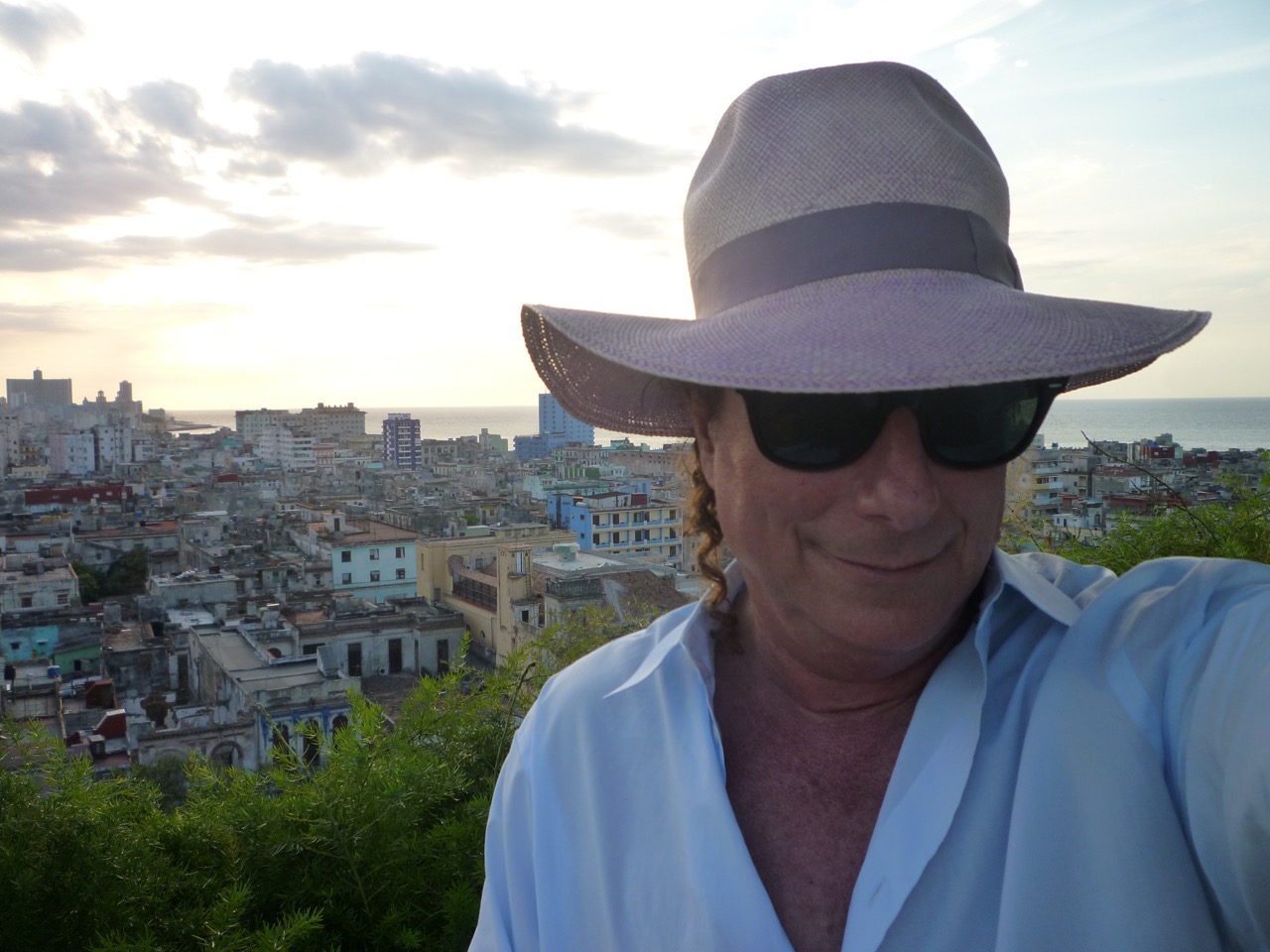
Gary in Habana Vieja 2016
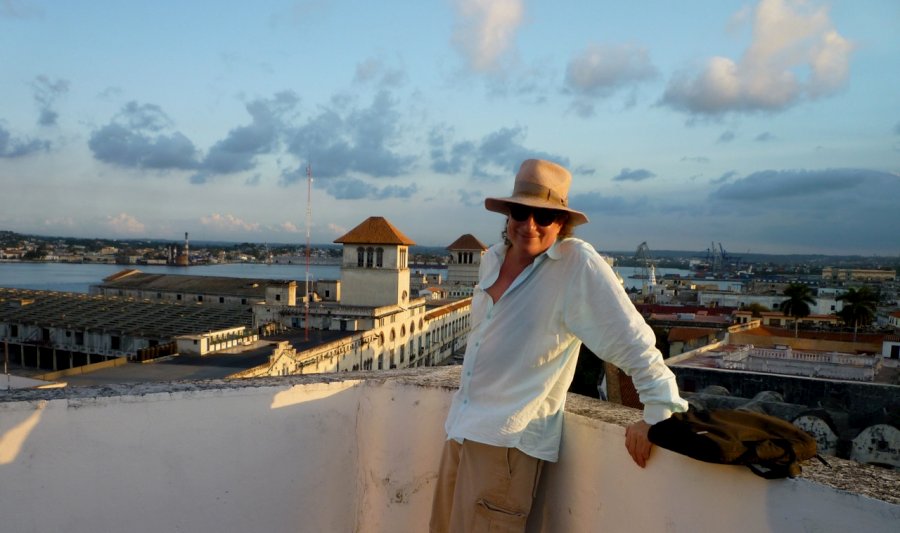
On the roof of Radio Havana in Cuba
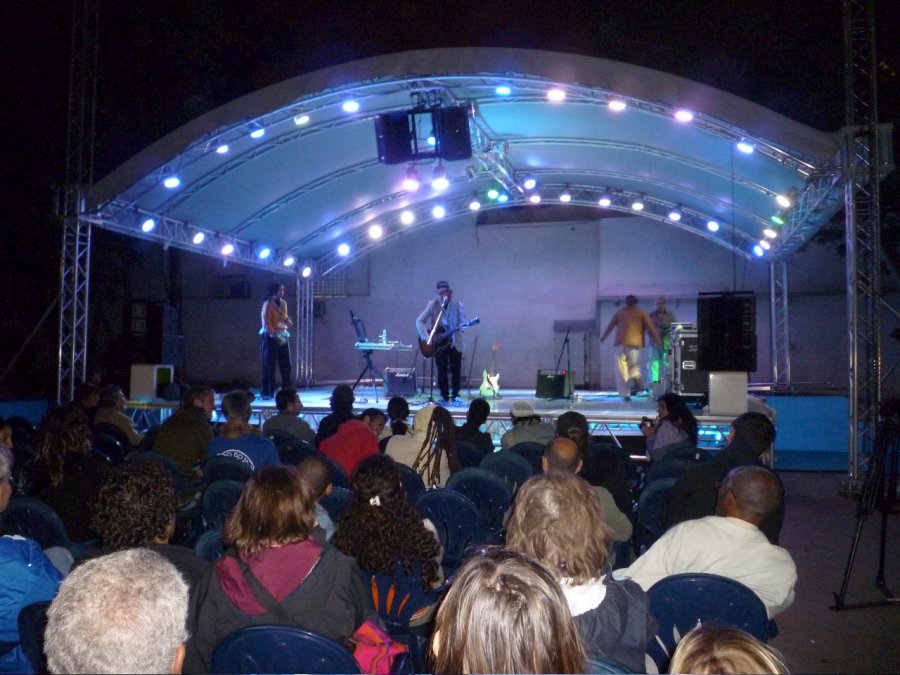
Gary Lucas plays solo at the Pabellon de Cuba 2013
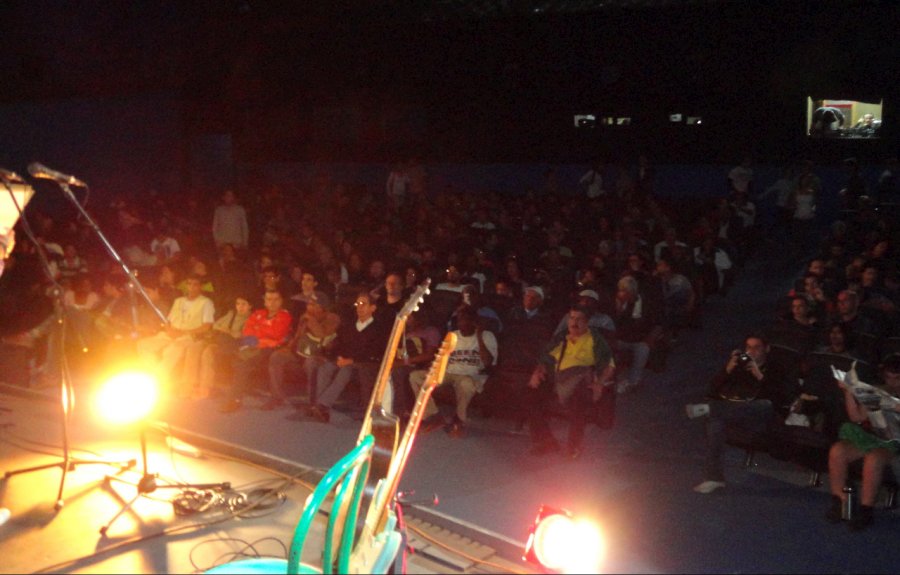
Full house for Gary Lucas at Havana Film Festival premiere of his live score for "The Exterminating Angel" at the 23 y 12 Cinema Havana
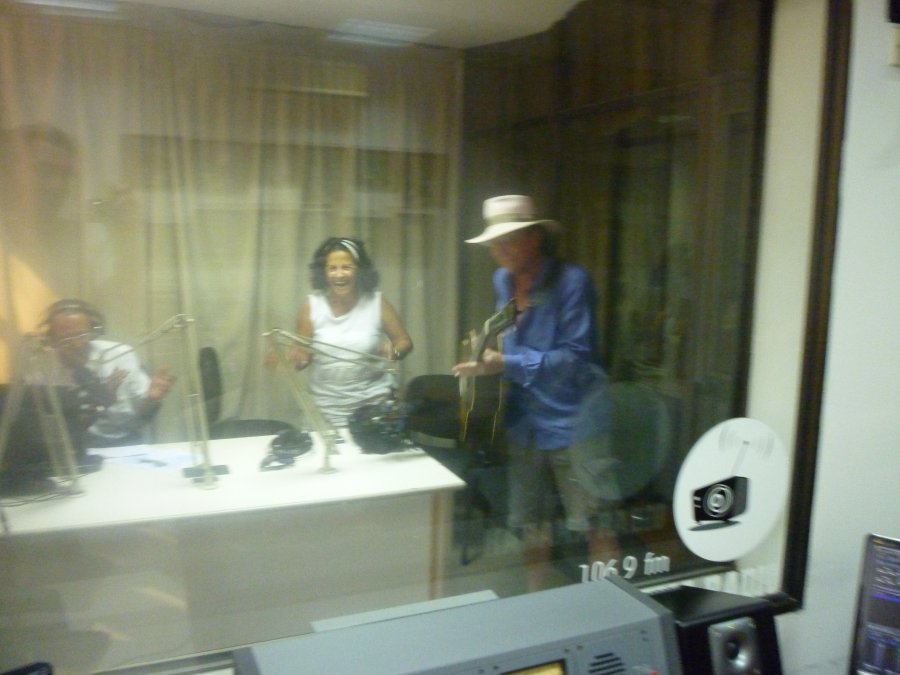
Performing live on Radio Havana with Esther Cardoso

At Esther Cardoso's Guest House in La Habana Vieja
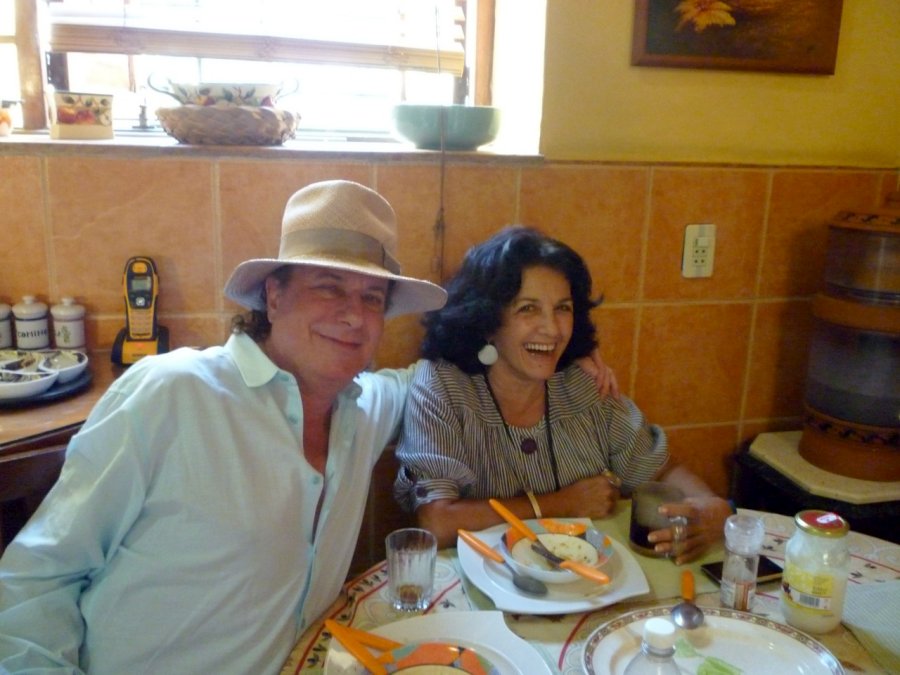
With Gary's friend actress/playwright/director and artistic director of Gaia Arts Center Esther Cardoso
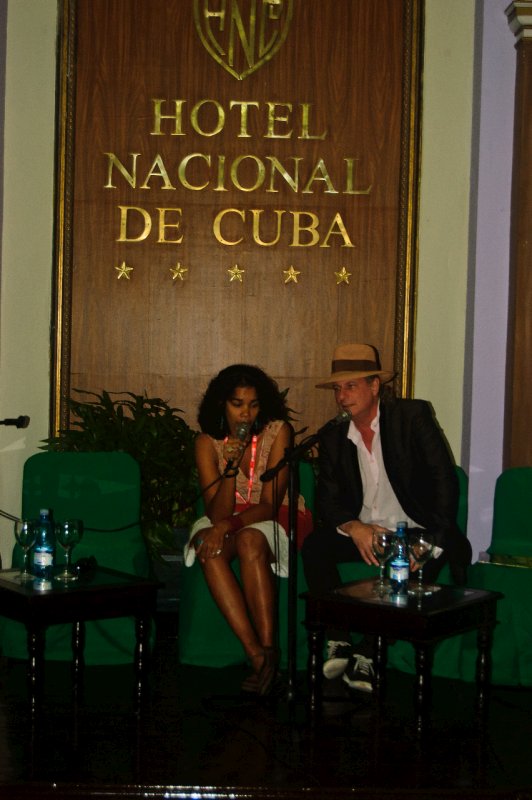
Press conference at the Hotel Nacional de Cuba for the world premiere of my live score for Bunuel's
"El Angel Exterminador" at the Havana Film Festival 2011
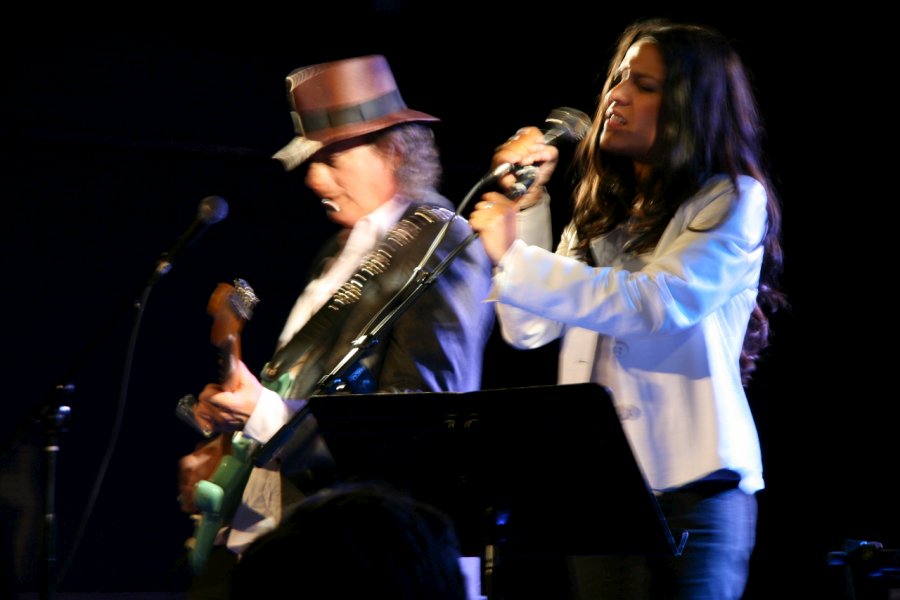
Gary performs "Grace" with Haydee Milanes, Jeff Buckley's greatest fan in Cuba, at a Tribute to Jeff Gary curated at the Knitting Factory Brooklyn March 2011
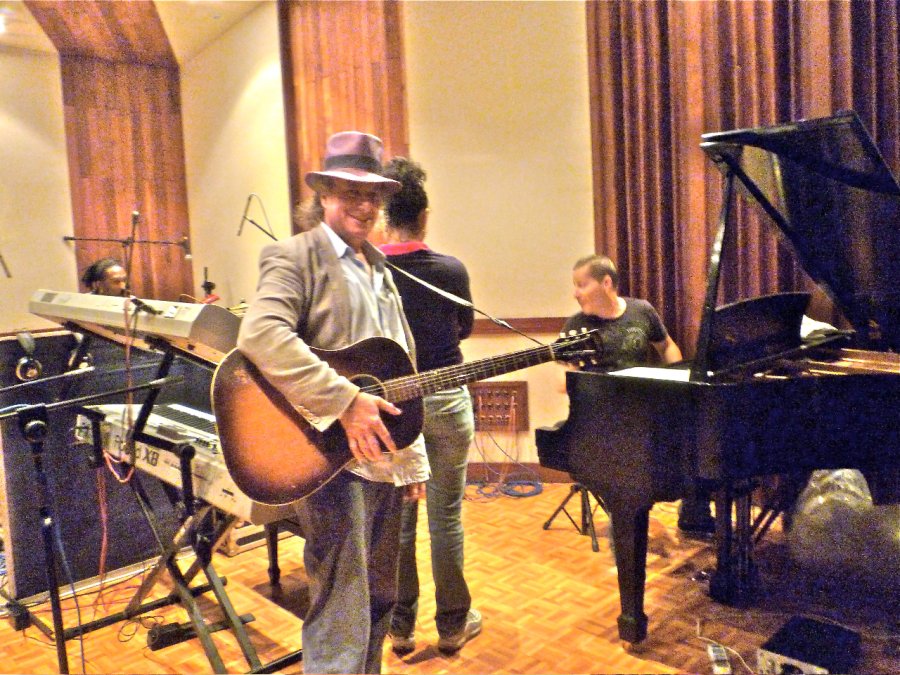
Gary with arranger/keyboardist Boris Luna and members of Los Van Van at the recording session for "Out from Under" at PM Records Havana 2/2011

Gary performs the world premiere of his live score for "Spanish Dracula" at the La Rampa Cinema
for the Havana Film Festival 12/2009
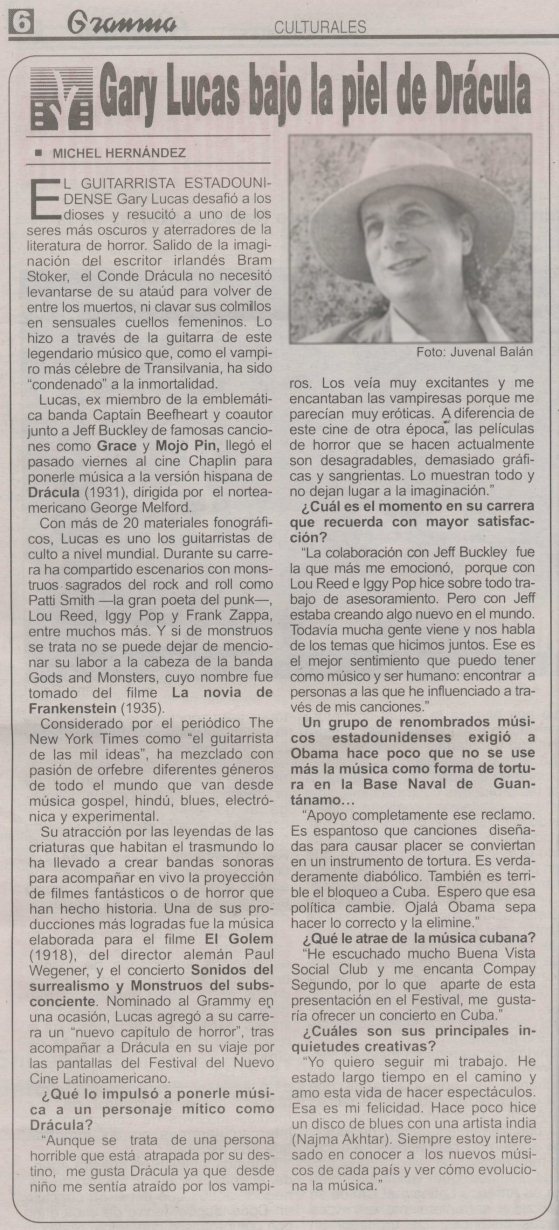
Rave review for Gary's live "Spanish Dracula" score in Cuban national newspaper Granma, English translation here

